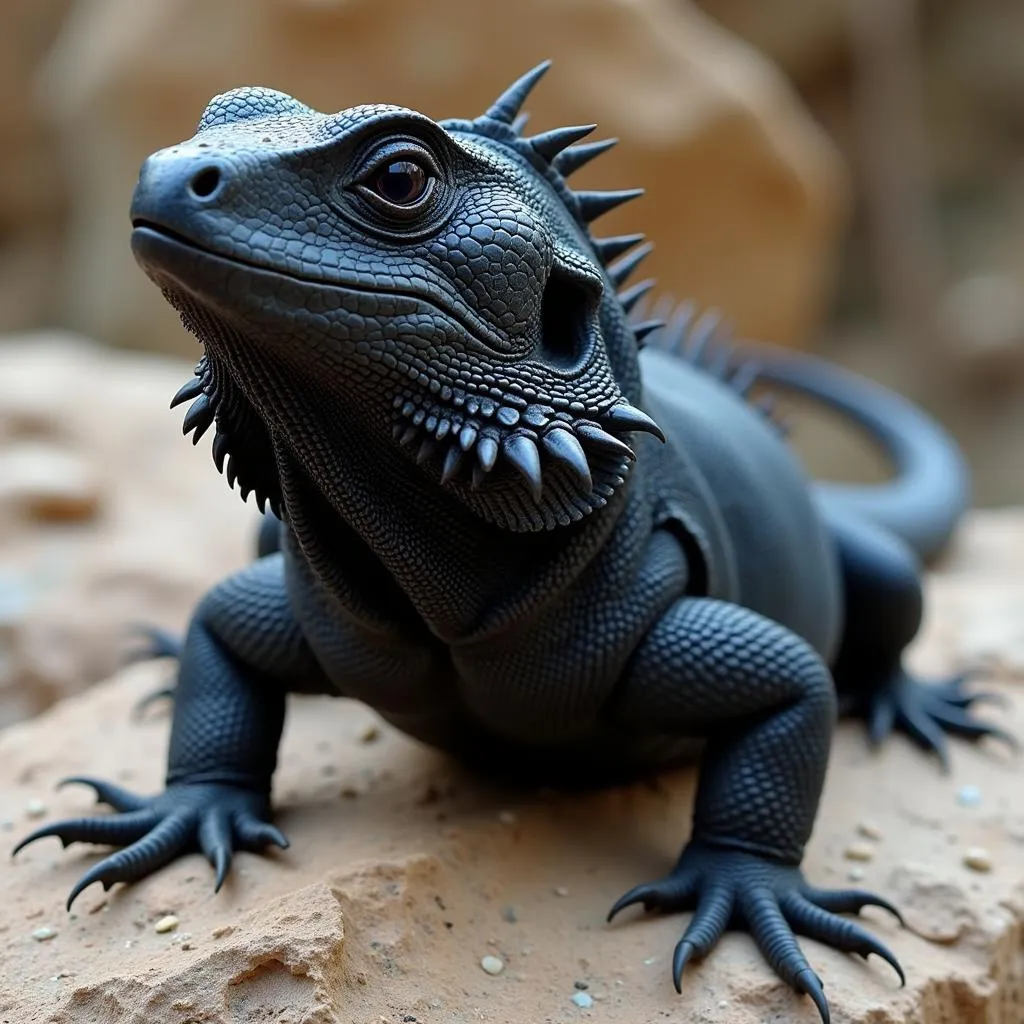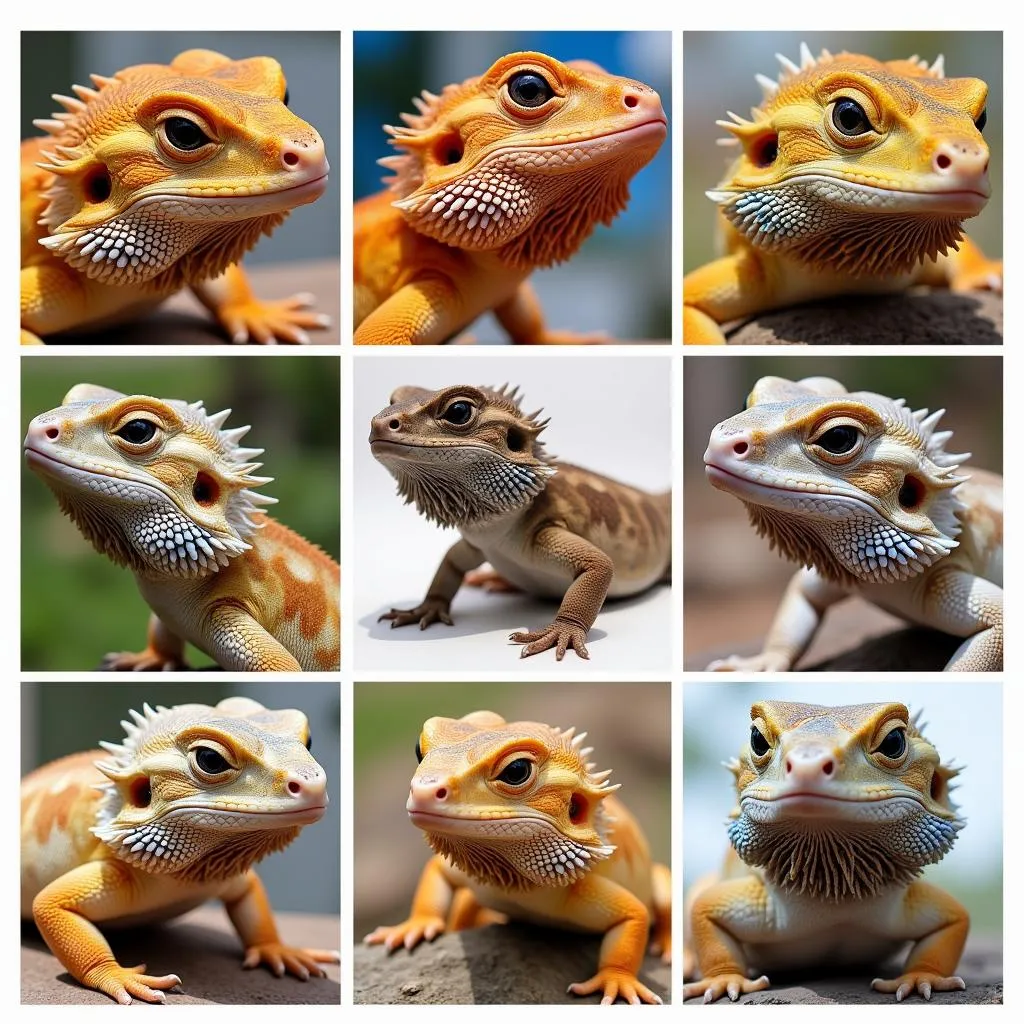Bearded dragons are captivating creatures known for their unique personalities and striking appearances. One of the most frequent questions potential owners have is, “What colors do bearded dragons come in?”. The answer is surprisingly diverse! While the classic image might be a sandy brown, these fascinating reptiles boast a spectrum of colors and patterns influenced by genetics and environmental factors.
Exploring the Bearded Dragon Color Palette
Forget what you thought you knew about lizard colors! Bearded dragons come in a breathtaking array of hues, each with its own charm. Let’s delve into some popular color variations:
-
Red: Ranging from fiery copper tones to deep crimson, red bearded dragons are a sight to behold. This vibrant hue often intensifies with age and proper lighting.
-
Orange: A burst of sunshine in your terrarium! Orange bearded dragons are known for their cheerful, often tangerine-like, coloring.
-
Yellow: From pale yellows reminiscent of desert sand to rich, golden hues, these dragons bring a touch of warmth to any space.
-
White: While a true white bearded dragon is rare, lighter shades bordering on cream or ivory are possible and highly sought after.
-
Black: Melanistic bearded dragons, although uncommon, display striking black coloration, sometimes with hints of other colors.
 Black Bearded Dragon resting on a rock
Black Bearded Dragon resting on a rock
Beyond Solid Colors: Patterns and Morphs
Bearded dragon coloration goes beyond simple hues. Intricate patterns and unique scale variations, known as “morphs,” further enhance their beauty. Here are some notable examples:
-
Leatherback: These dragons have a smooth, leather-like texture due to the absence of scales on their backs.
-
Translucent: This morph produces dragons with translucent skin, making their internal organs slightly visible.
-
Hypomelanistic: “Hypo” dragons have reduced melanin, resulting in lighter colors and patterns compared to their normal counterparts.
-
Dunner: This morph creates a unique blotchy pattern on the dragon’s back, often accompanied by solid-colored legs and tail.
 Various Bearded Dragon Morphs
Various Bearded Dragon Morphs
The Influence of Genetics and Environment
Just like humans, a bearded dragon’s color is determined by its genes, passed down from its parents. Breeders selectively pair dragons to achieve desired colors and patterns.
Environmental factors also play a role. Proper lighting, temperature, and diet can influence the vibrancy and clarity of a dragon’s colors.
“The interplay between genetics and environment is fascinating,” says Dr. Emily Carter, a renowned herpetologist. “While a dragon’s genetic blueprint lays the foundation for its color potential, optimal care can significantly enhance its overall appearance.”
Choosing Your Colorful Companion
With such a wide range of colors and patterns, choosing a bearded dragon can be an exciting experience. Remember, the most important factor is finding a healthy and well-socialized animal from a reputable breeder.
When selecting your scaly friend, consider your personal preferences and the aesthetic you want to create in your terrarium. Each bearded dragon color has its own unique charm and will bring a touch of the wild into your home.

